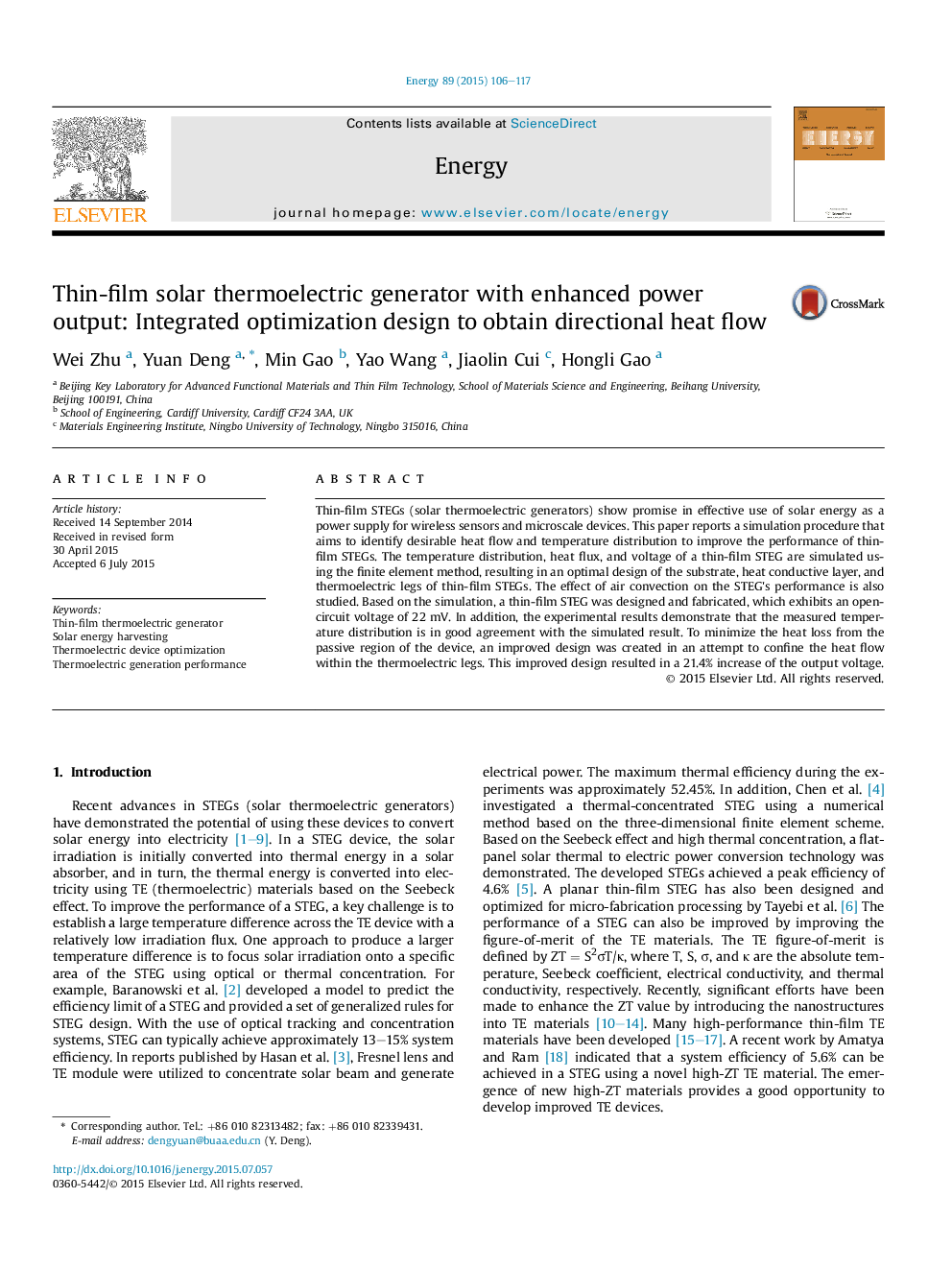| Article ID | Journal | Published Year | Pages | File Type |
|---|---|---|---|---|
| 1731891 | Energy | 2015 | 12 Pages |
Abstract
Thin-film STEGs (solar thermoelectric generators) show promise in effective use of solar energy as a power supply for wireless sensors and microscale devices. This paper reports a simulation procedure that aims to identify desirable heat flow and temperature distribution to improve the performance of thin-film STEGs. The temperature distribution, heat flux, and voltage of a thin-film STEG are simulated using the finite element method, resulting in an optimal design of the substrate, heat conductive layer, and thermoelectric legs of thin-film STEGs. The effect of air convection on the STEG's performance is also studied. Based on the simulation, a thin-film STEG was designed and fabricated, which exhibits an open-circuit voltage of 22Â mV. In addition, the experimental results demonstrate that the measured temperature distribution is in good agreement with the simulated result. To minimize the heat loss from the passive region of the device, an improved design was created in an attempt to confine the heat flow within the thermoelectric legs. This improved design resulted in a 21.4% increase of the output voltage.
Keywords
Related Topics
Physical Sciences and Engineering
Energy
Energy (General)
Authors
Wei Zhu, Yuan Deng, Min Gao, Yao Wang, Jiaolin Cui, Hongli Gao,
